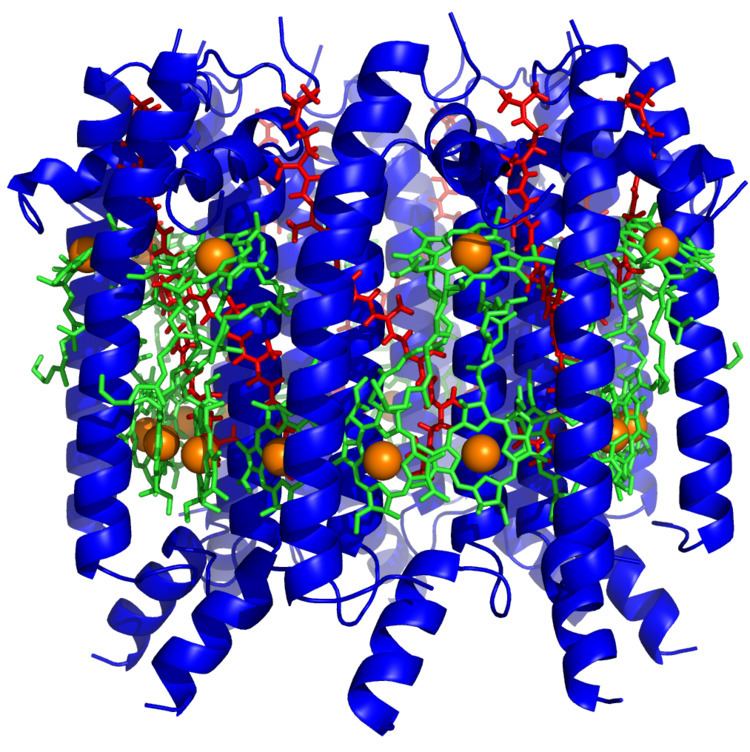Symbol LHC InterPro IPR000066 SCOP 1lgh | Pfam PF00556 PROSITE PDOC00748 SUPERFAMILY 1lgh | |
 | ||
Bacterial antenna complex proteins are the main light-absorbing components in photosynthetic bacteria.
In photosynthetic purple bacteria the antenna complexes function as light-harvesting systems that absorb light radiation and transfer the excitation energy to the photosynthetic reaction centres. The antenna complexes are generally composed of two types of polypeptides (alpha and beta chains) which are arranged in a ring-like fashion creating a cylinder that spans the membrane; the proteins bind two or three types of bacteriochlorophyll (BChl) molecules and different types of carotenoids depending on the species. Both the alpha and the beta chains of antenna complexes are small proteins of 42 to 68 residues which share a three-domain organization. They are composed of a N-terminal hydrophilic cytoplasmic domain followed by a transmembrane region and a C-terminal hydrophilic periplasmic domain. In the transmembrane region of both chains there is a conserved histidine which is most probably involved in the binding of the magnesium atom of a bacteriochlorophyll group. The beta chains contain an additional conserved histidine which is located at the C-terminal extremity of the cytoplasmic domain and which is also thought to be involved in bacteriochlorophyll-binding.
